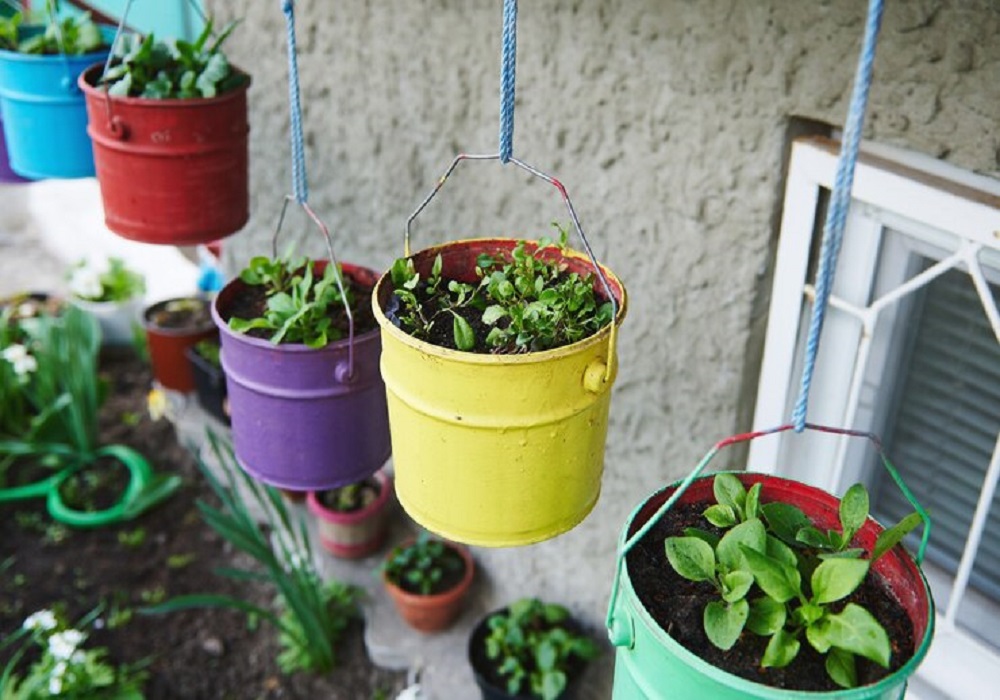In today’s urban environments where space is often limited, container gardening offers a versatile and practical solution for cultivating plants, flowers, herbs, and even vegetables. This article explores the art of compact gardening, provides creative container gardening ideas for small spaces, and offers practical tips to maximize gardening potential in urban settings.
Understanding Compact Gardening with Containers
The Rise of Container Gardening
Container gardening has gained popularity for its flexibility and accessibility. It allows gardening enthusiasts, urban dwellers, and those with limited outdoor space to grow plants effectively. Containers come in various sizes, shapes, and materials, making it possible to create a garden virtually anywhere – from balconies and patios to rooftops and even windowsills.
Benefits of Container Gardening
- Space Efficiency: Containers maximize vertical space and utilize unused areas, such as walls and railings, to expand gardening opportunities.
- Mobility and Flexibility: Containers can be moved easily, allowing plants to receive optimal sunlight and protection from weather conditions.
- Accessibility: Gardening in containers reduces bending and kneeling, making it accessible for people with physical limitations.
- Pest and Weed Control: Containers offer better control over pests and weeds compared to traditional gardens, minimizing maintenance efforts.
Creative Container Garden Ideas for Small Spaces
1. Vertical Gardens
Make use of the vertical space by hanging containers from fences or walls. Vertical gardens not only maximize space but also create a visually appealing green backdrop. Choose trailing plants like ivy or succulents for cascading effects.
2. Tiered Planters
Stacked or tiered planters allow you to grow multiple plants in a compact area. Choose tiered planters with different levels to create depth and variety in your garden. Plant herbs, flowers, or even small vegetables in each tier for a diverse and functional garden.
3. Window Boxes
Window boxes are perfect for small spaces like apartment windowsills. Plant herbs, colorful flowers, or compact vegetables like cherry tomatoes or lettuce. Ensure proper drainage and choose lightweight soil mixes suitable for containers.
4. Raised Beds
Construct raised beds with containers or build elevated platforms for growing plants. Raised beds provide depth for root growth and can accommodate a variety of plants, from ornamentals to edible crops.
5. Repurposed Containers
Get creative with containers by repurposing items like old buckets, crates, or even mason jars for container gardening ideas. Ensure proper drainage and choose containers that complement your space’s aesthetic while providing adequate room for plant growth.
6. Herb Gardens
Create a dedicated herb garden in containers placed near your kitchen for easy access. Herbs like basil, mint, and rosemary thrive in containers and add fresh flavors to your culinary creations.
7. Compact Fruit Trees
Select dwarf or miniature fruit tree varieties suitable for containers, such as dwarf citrus trees or compact apple trees. Place them in sunny spots and ensure proper care to enjoy homegrown fruits in limited spaces.
8. Seasonal Rotation
Maximize space by rotating plants seasonally. Choose plants that thrive in different seasons and swap them out accordingly to maintain a vibrant and ever-changing garden throughout the year.
Tips for Maximizing Compact Gardening Success
1. Choose the Right Containers
Select containers based on plant size, growth habits, and environmental conditions. Ensure containers have drainage holes to prevent waterlogging and use lightweight soil mixes suitable for container gardening ideas.
2. Optimize Sunlight
Place containers in locations that receive adequate sunlight based on plant requirements. Use reflectors or mirrors to maximize sunlight exposure, especially in shaded areas or narrow spaces.
3. Watering and Maintenance
Monitor soil moisture regularly and water containers as needed, taking into account environmental factors like temperature and humidity. Implement a watering schedule and use self-watering containers or drip irrigation systems for efficient water management.
4. Fertilization and Soil Health
Add compost or organic fertilizers to the soil on a regular basis to maintain its fertility. Use mulch to retain moisture and suppress weeds, promoting healthy plant growth and reducing maintenance.
5. Pest and Disease Management
Regularly check plants for indications of disease or pests. Implement integrated pest management strategies and practice crop rotation to minimize risks and maintain plant health.
Conclusion
Compact gardening with containers offers a practical and rewarding way to cultivate plants in small urban spaces. By leveraging creative container gardening ideas for small spaces and implementing practical tips for success, gardening enthusiasts can maximize their gardening potential and enjoy the beauty and benefits of green spaces in urban environments. Whether you’re a beginner or seasoned gardener, embrace the art of compact gardening to transform limited spaces into thriving green havens that enhance quality of life and connect you with nature.






